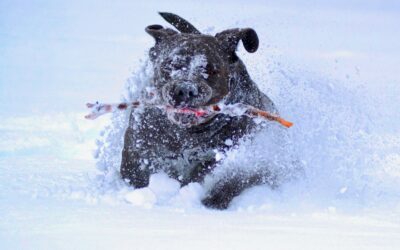Wax your ski-wigs
Wait. What. You mean – deliberately melt wax into the skin? Like… glide wax? Won’t they melt? What’s wrong with that two-coloured wax stick that lives in the breast pocket of my GoreTex shell? Well, gather round as we spill the secret to rapid ascents. And, no, it’s not intravenous coffee or being gene-spliced with sea mammals that can hold their breath for an hour. Many experienced rando-racers, ski guides and summit-hungry skidorks like the rest of us simply wax their skins in the same way they do their skis. It improves glide. It prevents icing up. It protects your skins. Yes, many skiers carry small blocks of wax to crayon on to the skin to prevent them icing up. This works; out in the field it can save the day. But hot waxing in preparation for a tour is much more effective and gives better performance. Rando-racers and national teams wax their skins for better glide. And there’s no serious reason why the rest of shouldn’t either. Less ice. Better glide. We all deserve this. So let’s get into the details.Here are the details
Enjoy your freshly prepared, fast, hardy, non-stick skins – and don’t keep the good news to yourself!
Dressing for adventure: what to wear in the wild
Norwegian grandmothers have it right: always wear wool against the skin. Beginning with wool as the first layer, the three-layer principle applies. Step this way for a guide to wrapping up warm in the wild.

Field repair kit
Bringing a repair kit can be very useful, even if you’re not going on a long expedition. Preparation, as always, is never a bad thing.

Storing skis until next season
Putting your skis to bed for the summer, clean and protected, is a chore, but it’s got to be done. It’s more than worth it. Here we break down the basics. Your skis will thank you. Actually, you’ll thank yourself come the first snow – for all sorts of reasons…

The NFSA guidance for outdoor dogs
The Norwegian Food Safety Authority (NFSA)’s rules for keeping dogs outdoors, and for interacting with dogs, is useful for adults and children alike.

Planning a tour
“Better safe than sorry” doesn’t mean you have to be anxious- Planning isn’t just something that makes your trip to the mountains safer – it’s a source of inspiration.

Tips for long distance ski tours
The first thing I want to say is that if you’re dreaming of something – do it. Just start making it happen! Don’t put it off. Because if there’s one thing that’s certain, it’s that you won’t regret it. It’s amazing what you can achieve if you only begin.